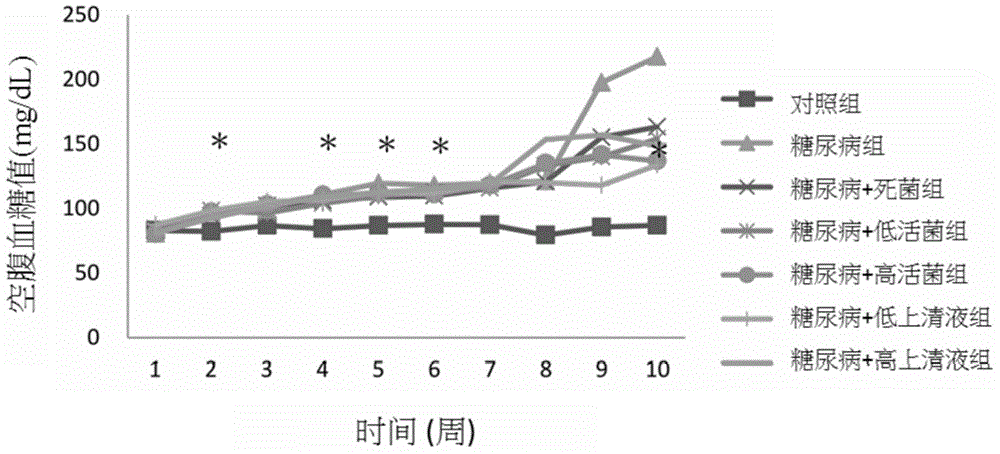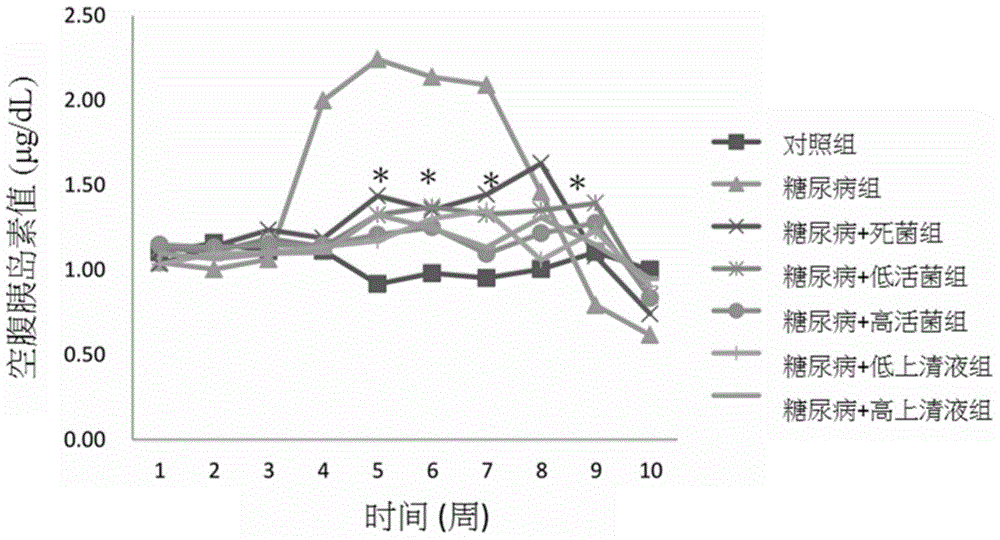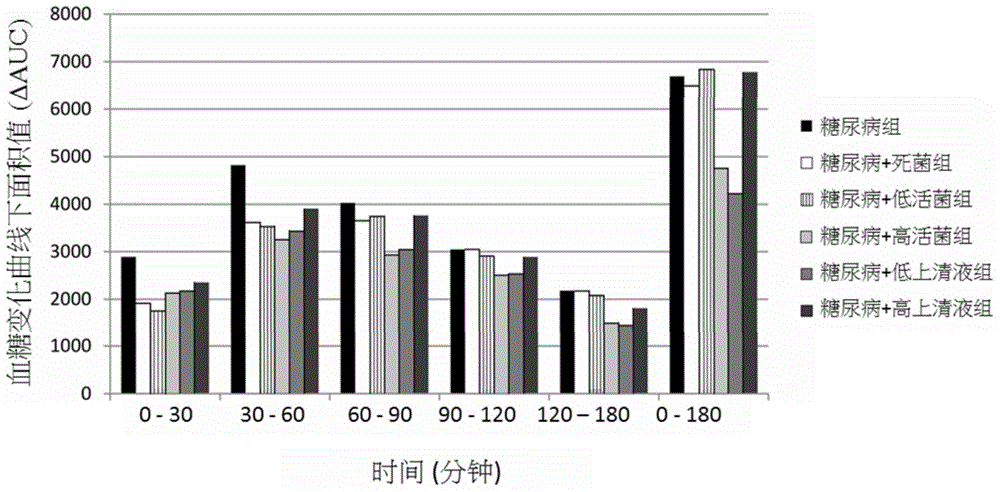Lactobacillus reuteri GMNL-89 composition for treating type II diabetes mellitus and use thereof
A technology of Lactobacillus reuteri and composition, applied in the field of Lactobacillus isolates, can solve problems such as no literature reports, and achieve the effects of improving high-density lipoprotein, improving insulin utilization, and reducing density lipoprotein
- Summary
- Abstract
- Description
- Claims
- Application Information
AI Technical Summary
Problems solved by technology
Method used
Image
Examples
Embodiment 1
[0135] Confirmation of Zoogenic Models
[0136] The fasting blood glucose levels of the rats in each group before the 7th week of the feeding period had no difference among the rats with type 2 diabetes. However, from the eighth week onwards, the blood glucose of the diabetic group, the group fed with high / low dose of live bacteria and the group of high dose of supernatant began to rise. In the serum group, the rising trend of fasting blood glucose was more moderate. The low-dose supernatant group was found to have the best protective effect on the animal model of type 2 diabetes induced by STZ+nicotinamide during the eight-week feeding period, and the results of this experiment also showed the same trend after ten weeks of feeding . The fasting insulin value started from the fourth week, and the insulin value of the diabetic group began to rise and showed the phenomenon of insulin compensation, which indicated that from the fourth week, the mice in the diabetic group had po...
Embodiment 2
[0138] Daily Food Intake Record
[0139] During the period of raising the mice, the food intake of the mice was recorded respectively, and the average value was taken. Because the difference in the intake of the mice may affect the body weight and affect the experimental results, it can be observed from the results in Table 2 that there is no statistical difference in the dietary intake of the mice in each group compared with the diabetic group. Therefore, we can speculate that the caloric intake of the mice should not be significantly different and will not affect the experimental results.
[0140] Table 2. Average food intake (g) during the raising of mice in each group
[0141]
Embodiment 3
[0143] Body weight and liver and kidney weight
[0144] In addition to the daily food intake records, we also recorded their weekly body weight changes. As can be seen from the results in Table 3, it can be observed that there is no statistical difference in the food intake of mice in each group compared with the diabetic group . At the tenth week, the rats were sacrificed for the experiment and their livers and kidneys were taken and their weights were measured. It was found that there was no statistically significant difference in the dietary intake of the rats in each group compared with the diabetic group (Table 4).
[0145] Table 3. Changes in body weight (g) of mice in each group during feeding
[0146]
[0147]
[0148] Table 4. Weights of liver and kidney organs of mice in each group (g)
[0149]
PUM
 Login to View More
Login to View More Abstract
Description
Claims
Application Information
 Login to View More
Login to View More - R&D
- Intellectual Property
- Life Sciences
- Materials
- Tech Scout
- Unparalleled Data Quality
- Higher Quality Content
- 60% Fewer Hallucinations
Browse by: Latest US Patents, China's latest patents, Technical Efficacy Thesaurus, Application Domain, Technology Topic, Popular Technical Reports.
© 2025 PatSnap. All rights reserved.Legal|Privacy policy|Modern Slavery Act Transparency Statement|Sitemap|About US| Contact US: help@patsnap.com



